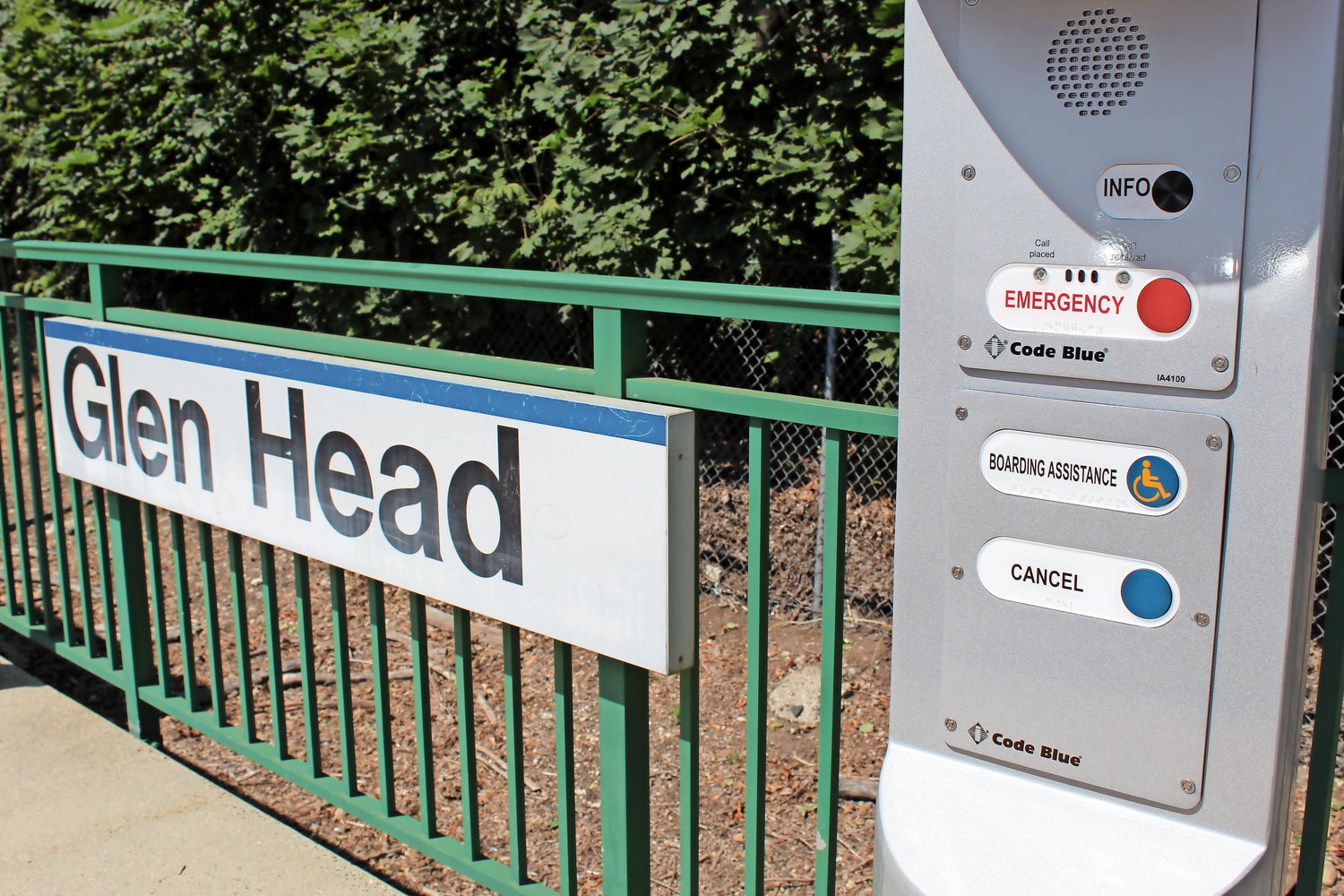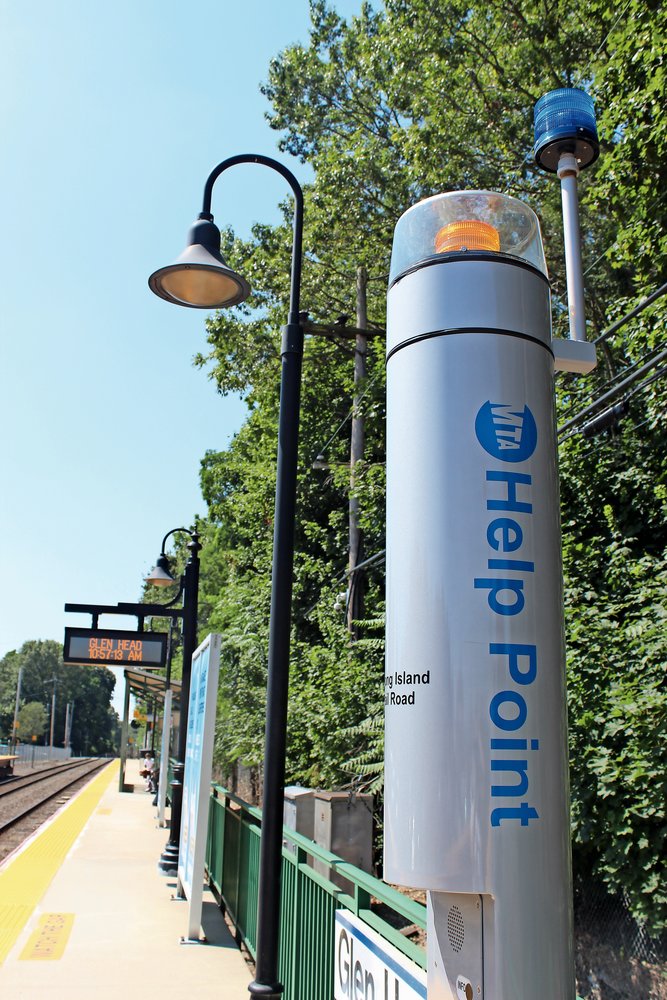Wednesday, April 17, 2024
 50.0°,
Overcast
50.0°,
Overcast
LIRR rolls out ‘Help Point’ service kiosks
New technolgy aims to aid disabled riders

The Long Island Rail Road is piloting new technology that aims to assist riders with disabilities. “Help Point” kiosks, which have recently been installed at the Glen Head train station, allow commuters to access customer services, emergency services and boarding assistance with the push of a button.
The kiosks, on the platforms on either side of the tracks, have a panel with four resource buttons, each with a braille translation of the word above it. Atop of the kiosk are two strobe lights — one blue and one yellow — that, when activated, flash to alert railroad personnel that a rider is in need of assistance.
In a video demonstrating the new technology, Shannon O’Connor, an LIRR communication systems engineer, explained that the blue strobe indicates to personnel that a call is being placed. The yellow strobe, she said, is for boarding functions.
When a rider presses the “boarding assistance” button, the yellow strobe flashes “to indicate to any train conductors . . . that you need boarding assistance,” O’Con-nor said, “so they have a crew ready on standby.”
The feature is new to the railroad, LIRR President Phillip Eng said. At a May 21 meeting of the MTA board of directors, Eng explained that the program was initiated in response to feedback from customers who said they felt insecure when boarding trains at night. He added that Glen Head was selected as the first station to host the kiosks because there were a number of LIRR Care calls that had come from the station. LIRR Care is a program for riders with mobility limitations who can request assistance when boarding or disembarking trains.
The Help Point kiosks, Eng said, would give commuters “more confidence that they will be observed, but also help our employees better observe that there is somebody on the platform in need.”
In the video, Vanessa Lockel, an LIRR government and community affairs representative, said the kiosks are not only for people with accessibility needs, but also for anyone seeking general information about train schedules, delays or other service issues that may arise.
“We have emergency call-in numbers on there as well,” Lockel added, “so it really does provide for an overall experience for our commuters to make accessibility easier.”
Debbie Forte works at the Center for Developmental Disabilities in Woodbury, where she trains developmentally disabled people in vocational services. She said she believed the kiosks would help the population feel “more comfortable and safe” while using the railroad.
“When they’re on the train, they’re fully independent, and there are times where they might run into something where they’ll need extra assistance,” Forte said. “It’s a little hard [for them] . . . to ask for help from a stranger, but having formal help [from the LIRR] would be great.”
The video shows a person in a wheelchair using a kiosk and getting help from a conductor when a train arrives. But while the aim of the technology is to assist riders with a range of special needs, some experts question its effectiveness in aiding those who are blind, deaf or have developmental disabilities.
Loretta Murray is the executive director of policy, planning and advocacy at Mill Neck Services, an organization that helps deaf and hard-of-hearing people find jobs through training and job-development programs. Murray, who lost her hearing after childhood, said she believed the technology was geared more toward riders with mobility issues.
“This device would not work for people with hearing loss,” she wrote in an email to the Herald Gazette. “There’s no means of manual communication with interpreters on a screen to tell me what’s going on.”
Cheryl Donato, who also works at the Center for Developmental Disabilities, said that she, too, believed that developmentally disabled riders would benefit from a screen interface. “Someone with an intellectual disability is not going to know what that button is doing,” she said. “They’re going to need feedback. “With a two-way camera . . . the person giving the information can also ascertain the person they’re talking to.”
Eng said that the LIRR would eventually install Help Point kiosks at all 124 stations across the system, as well as at Metro-North stations. “As we get more feedback,” he said, “we’re going to look at how to better enroll it.”
HELP SUPPORT LOCAL JOURNALISM
The worldwide pandemic has threatened many of the businesses you rely on every day, but don’t let it take away your source for local news. Now more than ever, we need your help to ensure nothing but the best in hyperlocal community journalism comes straight to you. Consider supporting the Herald with a small donation. It can be a one-time, or a monthly contribution, to help ensure we’re here through this crisis. To donate or for more information, click here.
Sponsored content
Other items that may interest you







